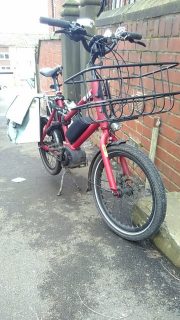Why I support the Govt consultation: ‘Smarter regulation: proposed changes to legislation for electrically assisted pedal cycles’ – by Richard Attwood. The Govt has just (29.02.24) launched a consultation , as part of a wider Smarter Regulation Programme, to explore the possibility of an increase in the current legally permissible wattage rating of electric bikes… Continue reading e-bike consultation: ‘More Watts? – Smarter regulation?’
Category: Uncategorised
E-Bike Guide Updated
E-Bike guru Richard Attwood has updated his e-bike guide for 2024
Last Night’s Cycle Forum
Sheffield to Dublin
Sail-Rail from Sheffield to Dublin – What’s it like? I got the train to Holyhead on Oct 2nd, the day after a strike, so I was a bit worried that my journey would be disrupted. Although Northern had cancelled the 09:14 stopper, the 09:11 express was running and they even took the time to attach… Continue reading Sheffield to Dublin
New Route in “Further Afield”
Active Travel Update – July 2022
E-Bike page updated
Our e-bike page is updated monthly with all the latest info. Visit Now! Electric bikes (e-bikes) explained
A Long View of Longdendale
I was a latecomer to car culture, and still not that keen on the metal boxes so I’ve been attempting to get across the Pennines by bike or by public transport ever since I arrived in Sheffield in 1974. I don’t think I ever got the chance to travel across the Woodhead line – I… Continue reading A Long View of Longdendale
Sheffield to Norfolk
Sheffield to Great Massingham Day 1. Train to Kiveton (brand new, sparkling clean) then on NCN6 through Workshop to Clumber Park which was gorgeous. Clumber bridge was severely damaged by an arsehole in a car but has now been repaired and closed to traffic – hopefully it will stay that way. On to 642 through… Continue reading Sheffield to Norfolk
Looking for a bike club in the Sheffield Area?
If you’re looking for people to go out riding with there’s a club for every type of rider in the Sheffield area. Have a look at our Clubs page. Sheffield Bike Clubs

